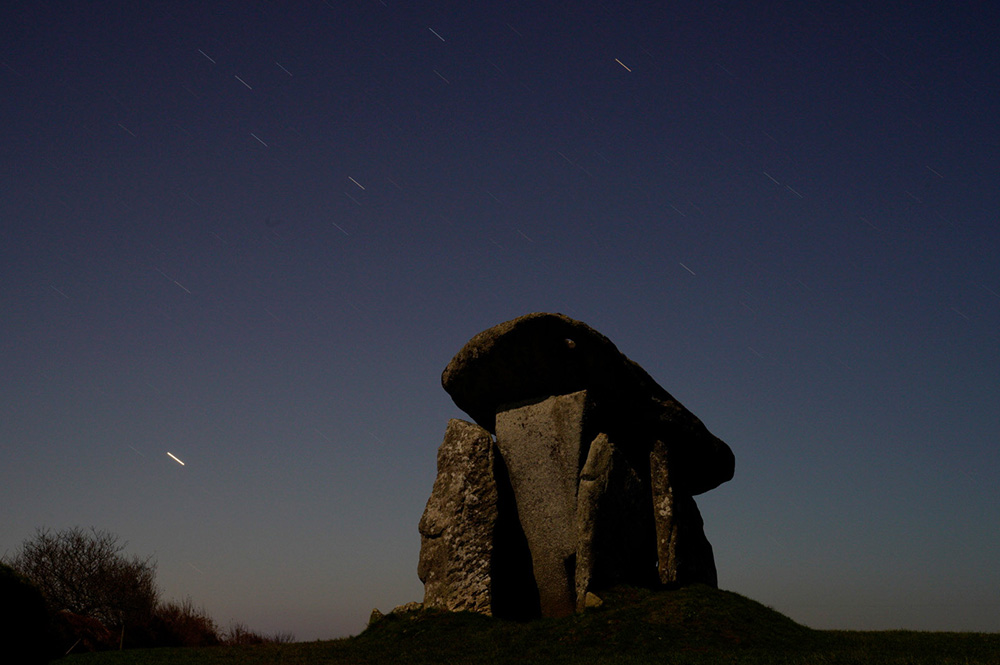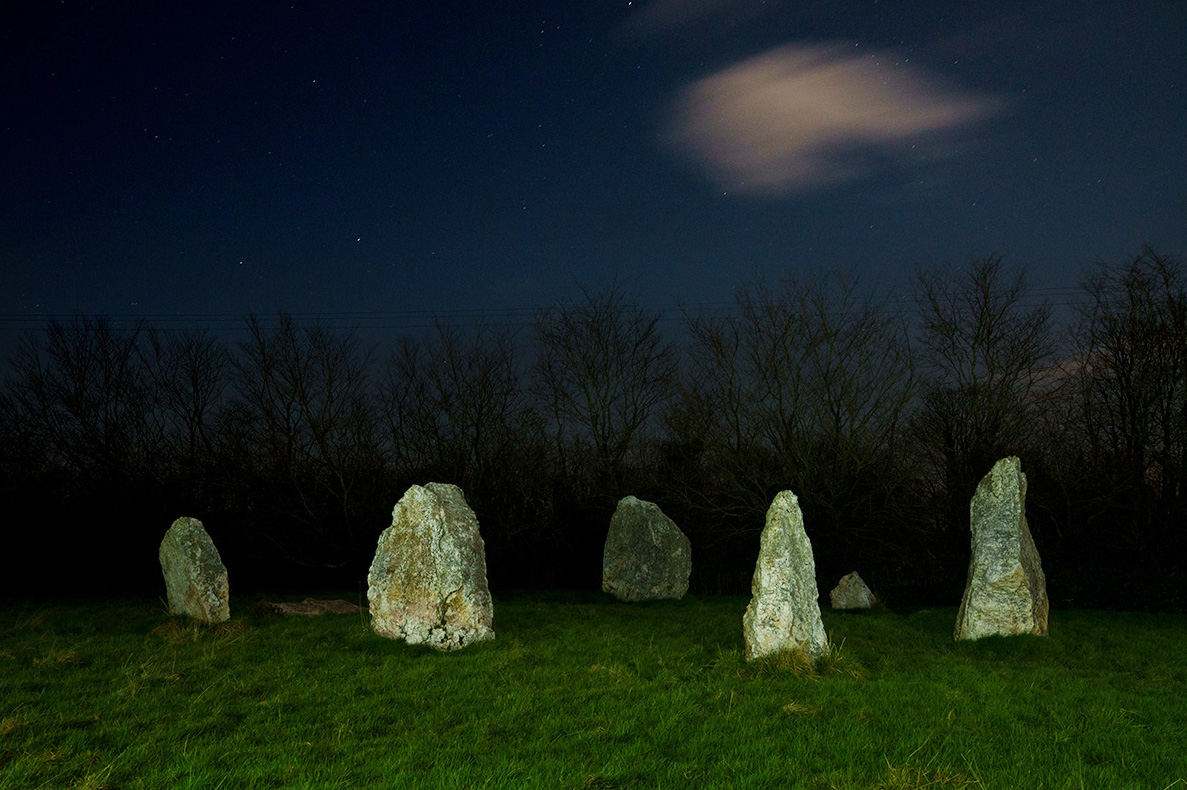|
|
____________________________________________________________
Below are images from prehistoric sites in Cornwall—Hendraburnick, Lanyon, Carwynnen, Trethevy, Duloe, and Merry Maidens—early possible visuals for the Fulbright project.
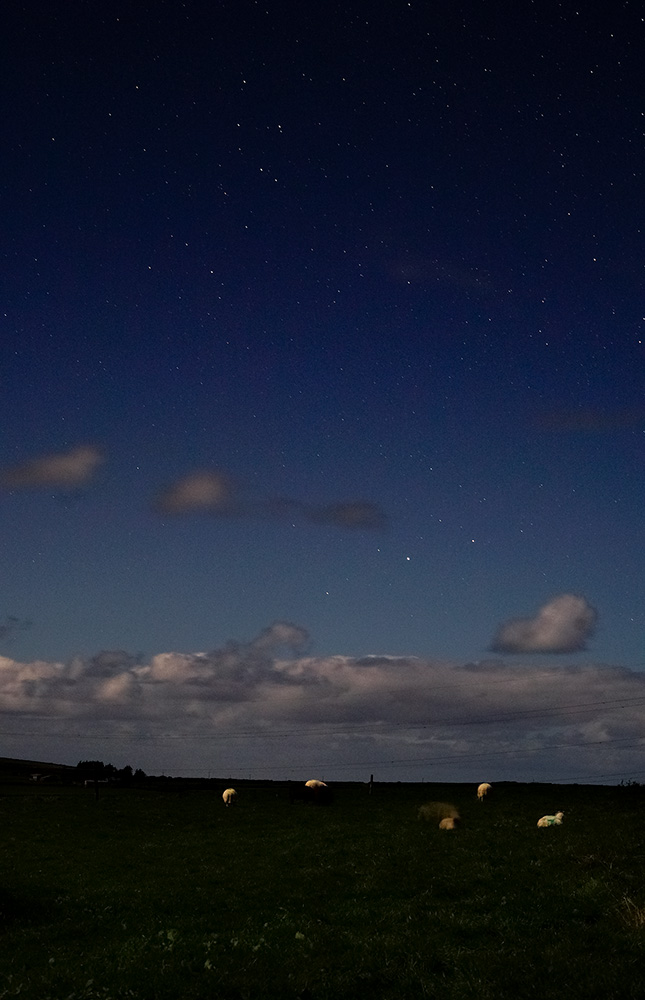
October 22rd — I tried out the astonishing low-light capabilities of the Sony Alpha 7 digital camera in the field near Camelford that contains the Hendraburnick site, which is thought to be night sky related. One a.m. with an almost-full moon, which gently illuminated the night clouds and the sheep. I've always loved the Limbourg Brothers' Book of Hours from
the early 1400's, and somehow this image puts me in mind of those blue skies with stars in them.
______________________________
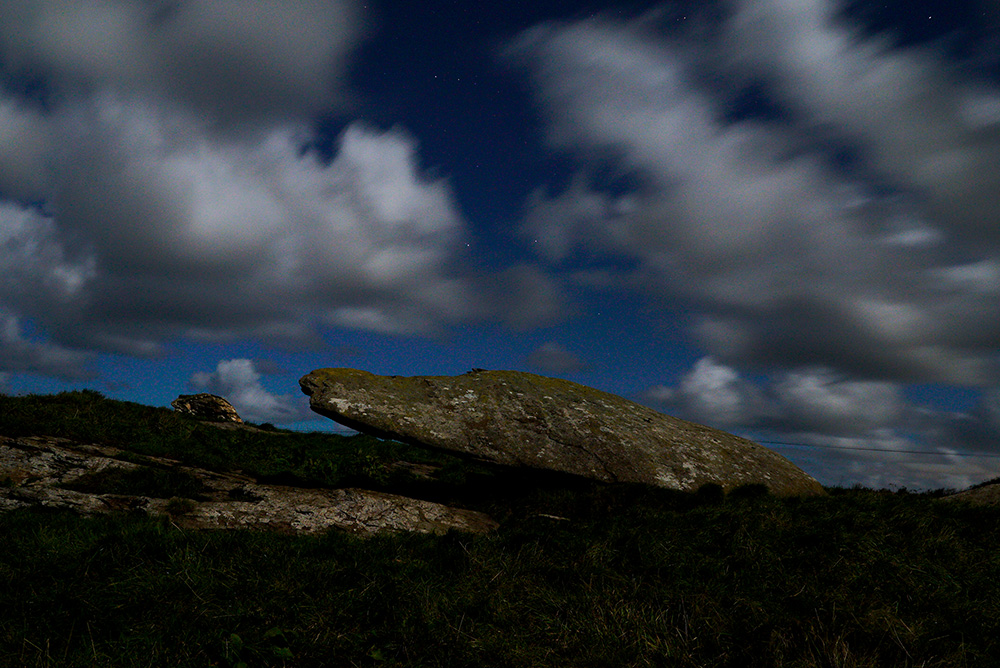
From earlier that same night, here is the main Hendraburnick stone. It is tricky to photograph. It's hard to convey the scale (it's very big) and also to incorporate the commanding position it holds at the top of the surrounding landscape. In this test image with the low-light digital camera, none of this vibrancy, color, or detail was visible to the naked eye. The only hint that it's a night scene are a few star points in the sky.
______________________________
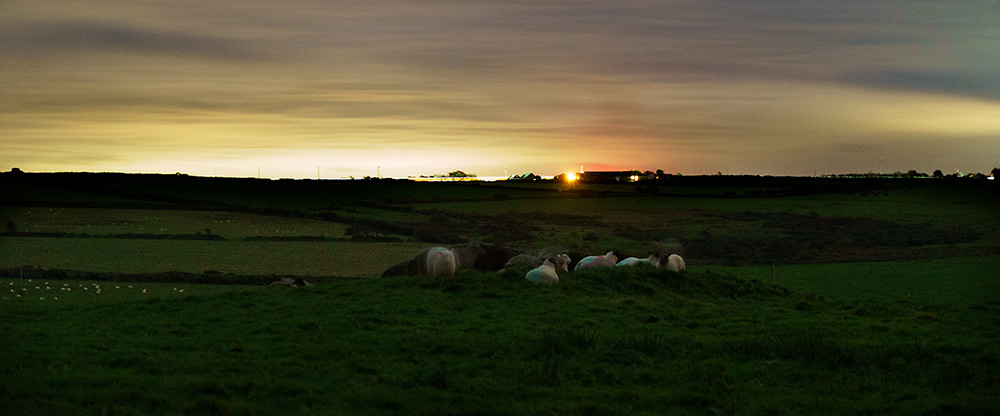
October 23rd, 7:30 p.m., after sunset and before moonrise with a socked-in cloudy sky.
I was
revisiting Hendraburnick from the top side of the rock. To give you an idea of the capabilities of these low-light digital cameras, I literally could see no sheep in the scene—I just saw a vague lumpiness where I knew the stone to be. I literally photographed it so I could see what was there. Since the clouds made for disappointing conditions for night shooting anyway, I tiptoed away instead of disturbing the sheep further. Apparently, everyone loves a big rock!
______________________________
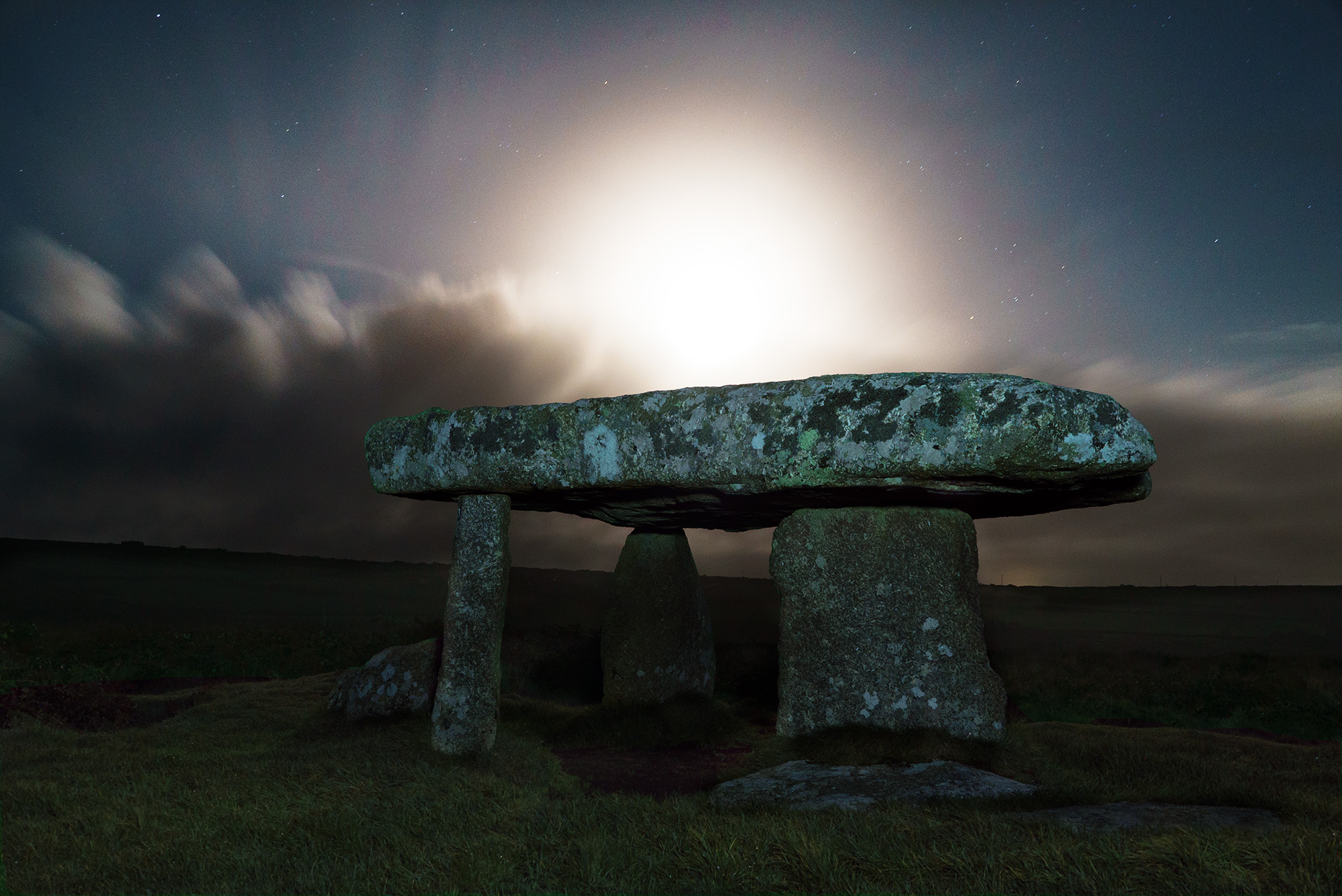
October 24th. 9:30 p.m. A waning gibbous moon just after rising. Lanyon Quoit near Penzance. The moon rises around sunset when full but on average 50 minutes later per night after that. Once you're more than a night or so after the full moon, you're beyond the best conditions for moon shooting.
____________________________________________________________
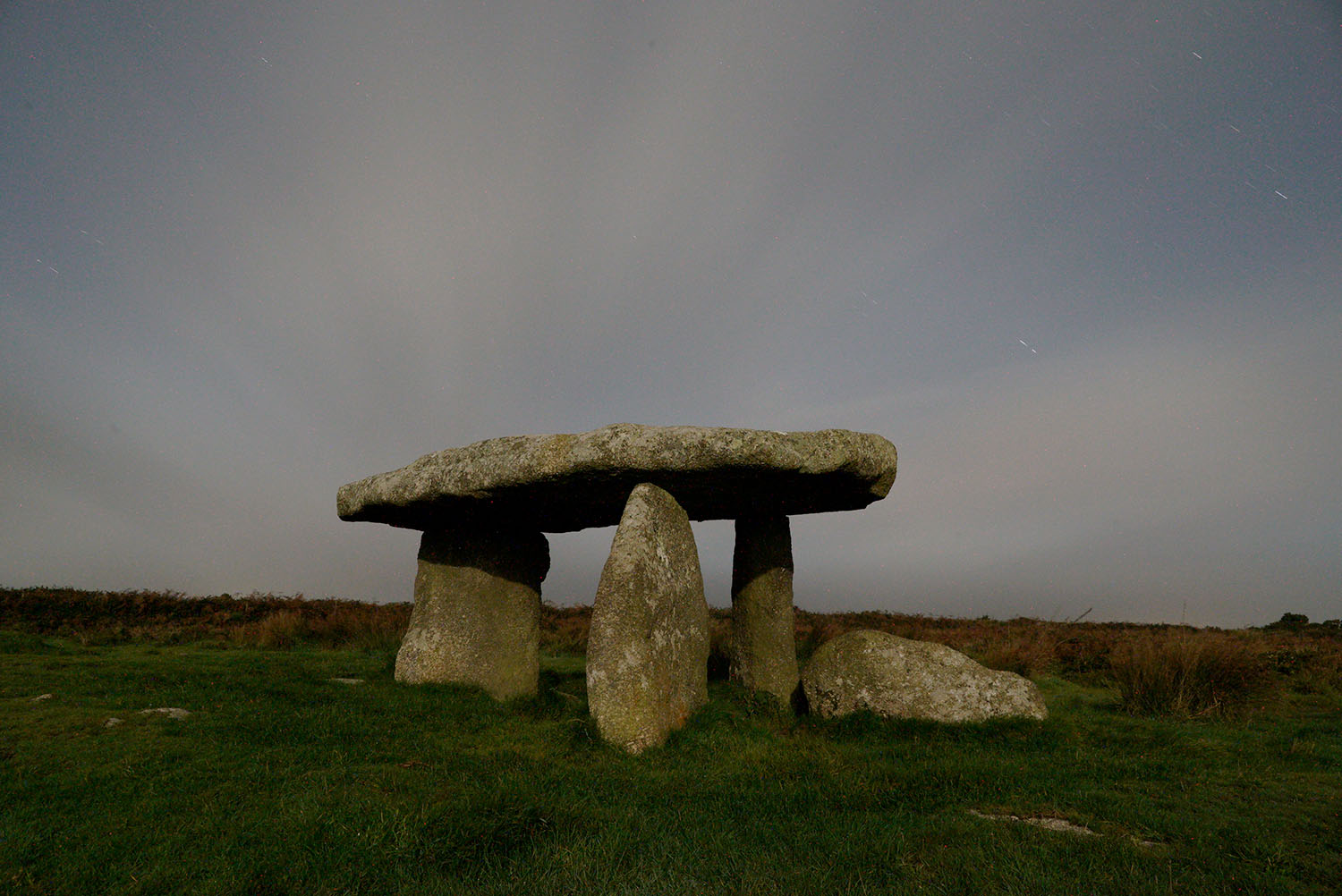
October 24th. 10:12 p.m. Lanyon Quoit facing away from the moon.
____________________________________________________________
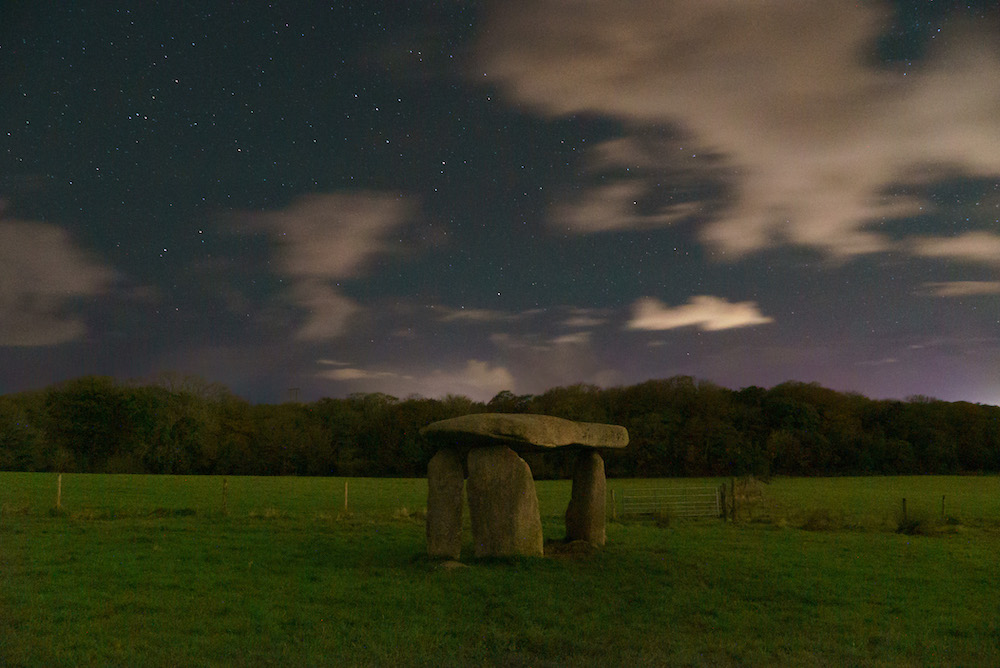
November 3rd, just after midnight at Carwynnen Quoit, near Redruth, Cornwall |
____________________________________________________________
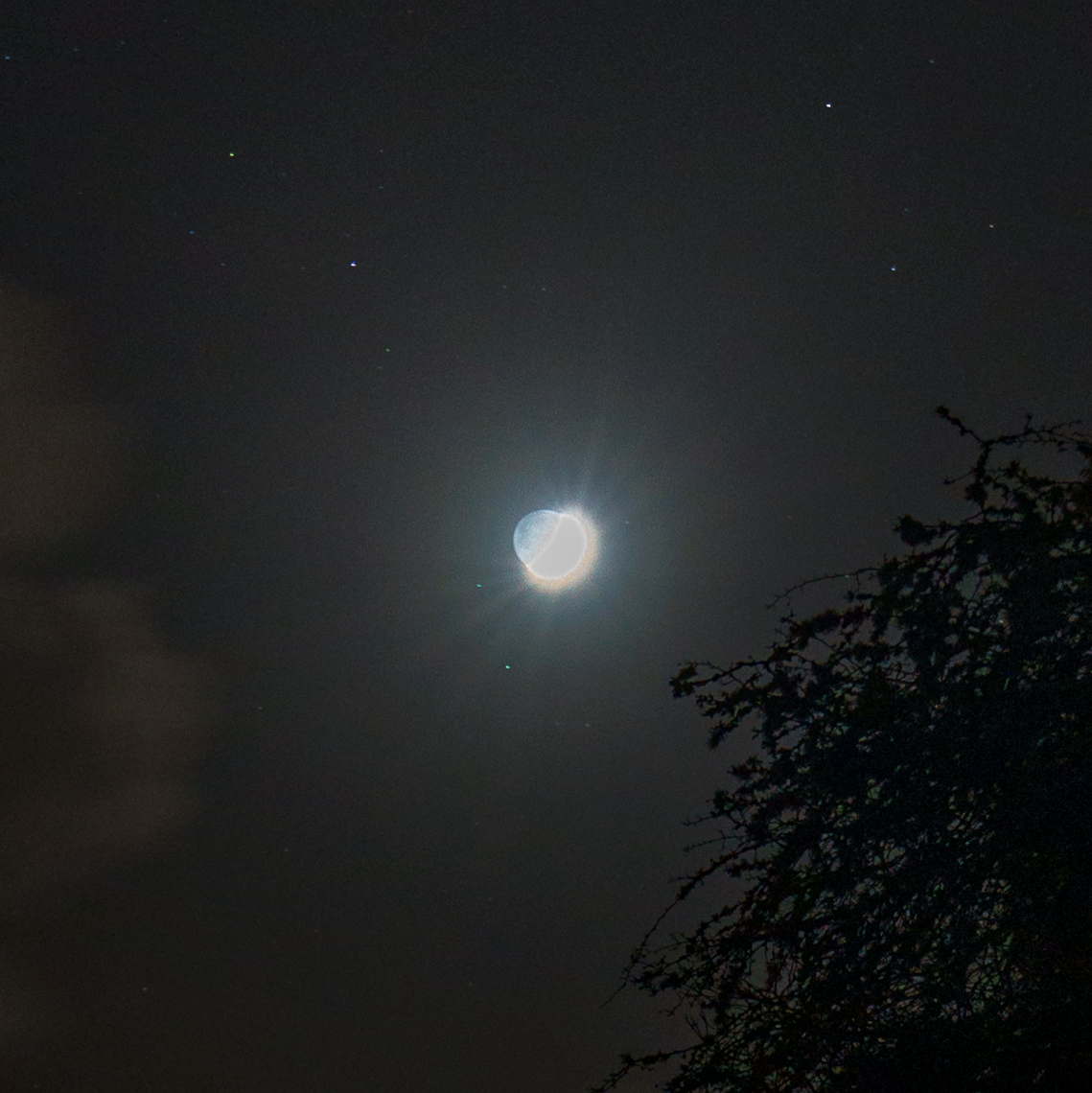
December 8th: Experimenting with the new high-resolution camera and exposures in scenes with a crescent moon ☽. This is a tiny part of the original image. So interesting what happens when it's super-enlarged and darkened. In this exposure, the sliver of a crescent shape this is visible to the naked eye becomes a thick half moon of light on the sensor and also illuminates the details on the dark part of the moon, which is invisible to the viewer at the scene.
|
|
|
December 17th: Trethevy Quoit near Bodmin Moor illuminated by the waxing, almost-full moon. The front support stones originally had quartz inlaid and would have glowed in the moonlight. The quoit faces east, where the rising moon shines directly on it. The bright streak in the lower left of the sky is the planet Jupiter, a stalwart of the winter sky.
|
|
January 19th 2022: Duloe Stone Circle with cloud illuminated by the waning gibbous moo |
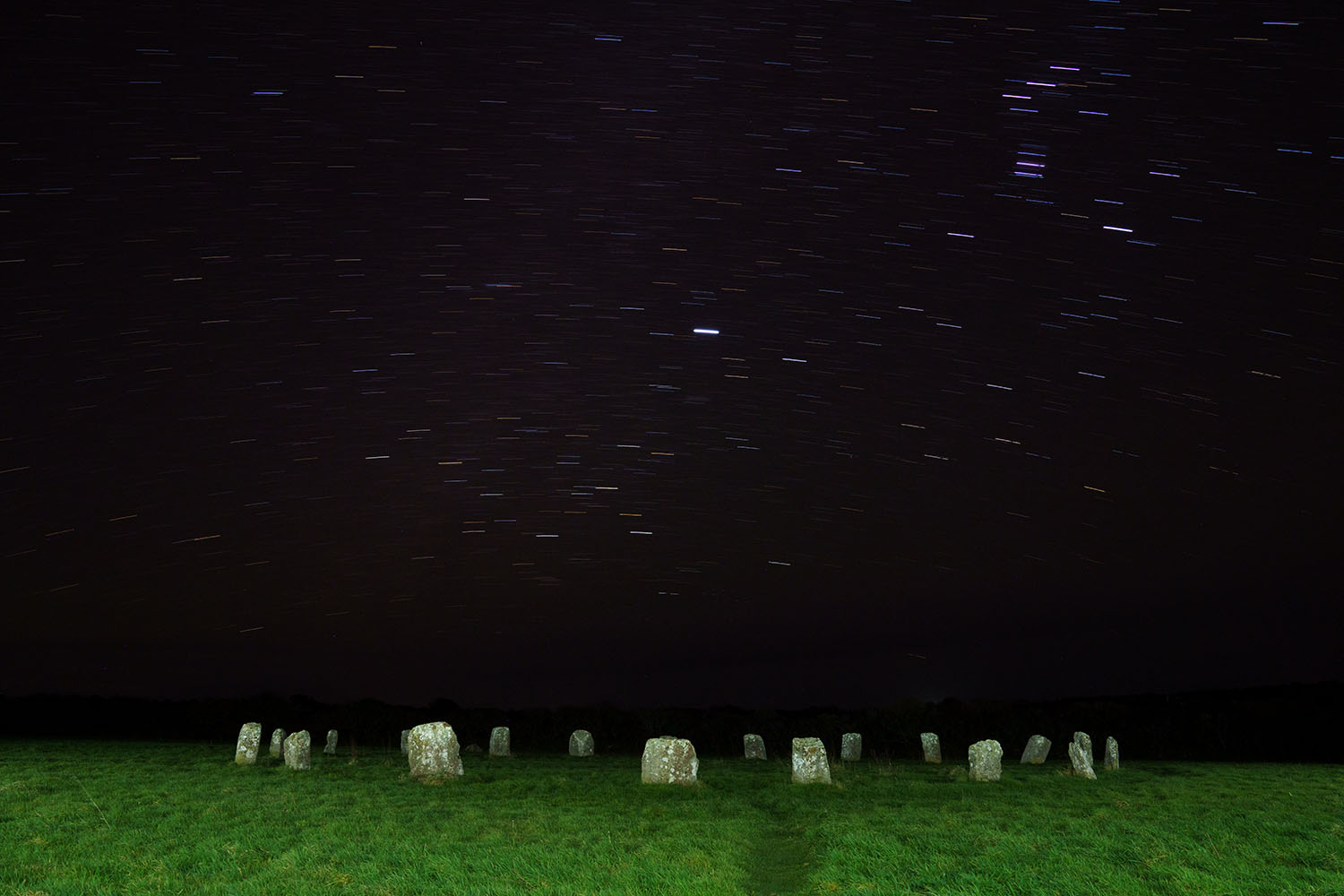 |
| February 5th, 2022: Merry Maidens, West Penwith, Cornwall, under a starry sky—including Orion (top right) and Sirius (center) |
|









